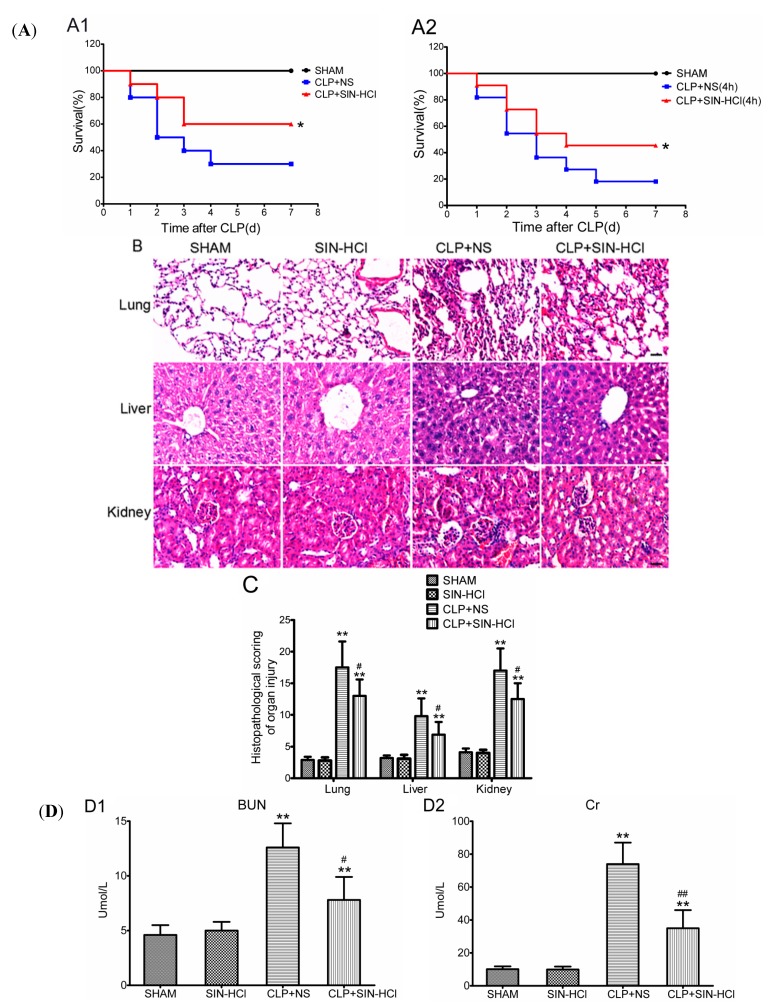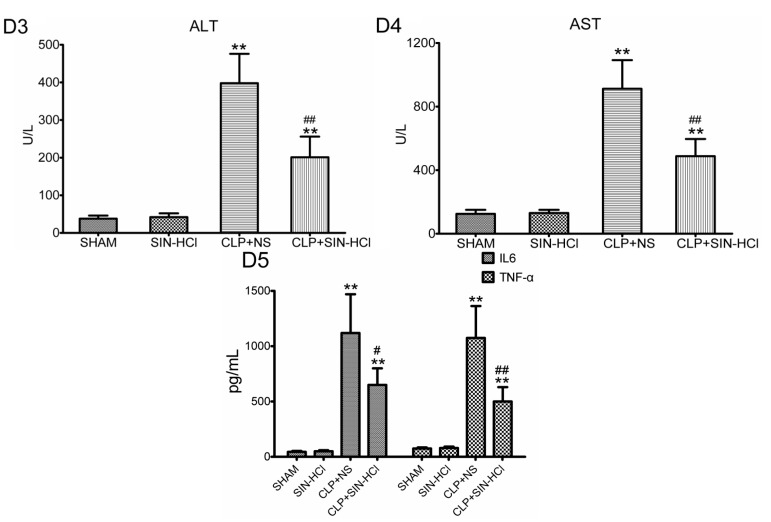Figure 2.
SIN-HCl protected a mouse model against polymicrobial sepsis and attenuated the multiple organ dysfunction and systemic inflammatory response. (A) SIN-HCl improved the survival rate of mice with CLP-induced sepsis. BALB/c mice were subjected to CLP surgery. SIN-HCl (100 mg/kg) was administered by hypodermic injection at 0 h (A1) or 4 h (A2) after CLP surgery. NS was used as the control. * p < 0.05 when compared with CLP + NS group. Data were pooled from three experiments, n = 10 per group in each experiment; (B) The lungs, liver, and kidneys were stained with HE. The organ damage induced by CLP was attenuated significantly in SIN-HCl-treated BALB/c mice, as evidenced by less inflammatory cell infiltration, reduced exudate blockage of capillary, and less substantial interstitial cellular degeneration and necrosis in the lungs, liver, and kidneys. Scale bar was equivalent to 50 μm. Images were the selected representatives of each group, which had six to eight mice; (C) Semi-quantitative analysis of lung, liver, and kidney injury. ** p < 0.01 when compared with sham BALB/c mice, n ≥ 6; # p < 0.05 when compared with the NS-treated BALB/c mice, n ≥ 6; and (D) Biochemical measurements of the serum (D1–D4) were performed on automatic biochemical analyzer, and concentrations of serum IL-6 and TNF-α (D5) were determined by ELISA. ** p < 0.01 when compared with sham BALB/c mice, n ≥ 6; # p < 0.05 and ## p < 0.01 when compared with the CLP and NS-treated BALB/c mice, n ≥ 6.


